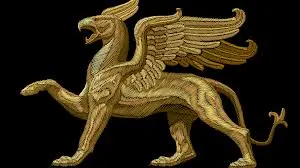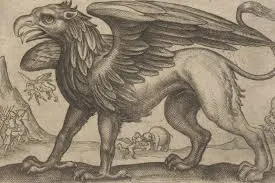Explore the fascinating world of the griffin, a legendary creature with the body of a lion and the head of an eagle. Discover its historical significance and symbolism in various cultures.
The griffin, a legendary creature with the body of a lion and the head of an eagle, has captivated the imaginations of people across various cultures for centuries. This mythological being, a fusion of two powerful animals, symbolizes strength, courage, and protection. In this article, we delve into the origins of the griffin, its significance in ancient myths, and its impact on art, culture, and modern symbolism.
Origins and Mythological Significance
The griffin’s roots trace back to ancient civilizations, notably in Egyptian, Persian, and Greek mythology. Early depictions of the griffin date back to around 3000 BCE in the ancient world. In Egypt, the griffin was believed to be the protector of treasures, often seen guarding sacred relics and tombs. Its eagle-like head and lion’s body represented a powerful hybrid, combining the majesty of the king of beasts with the supremacy of the king of the skies.
In Persian mythology, the griffin was associated with divine guardianship and was often seen as a celestial being. It was depicted as a creature that flew across the heavens, carrying the gods’ messages. The griffin’s fierce nature and noble appearance made it an ideal protector of gods and royal figures.

Symbolism in Different Cultures
Throughout history, the griffin has held a variety of symbolic meanings depending on the culture that embraced it.
- In Greek and Roman Mythology: The griffin was a creature of both power and guardianship. It was believed to guard precious possessions, such as gold and jewels, as it was thought to be a fierce protector. Greek and Roman artists often depicted griffins on vases, coins, and monuments to symbolize protection, bravery, and wealth.
- Medieval Europe: During the medieval period, the griffin became a symbol of royalty and divine protection. In Christian tradition, it was seen as a creature that represented the dual nature of Christ—human and divine. The lion’s body symbolized Christ’s humanity, while the eagle’s head was associated with his divinity. Griffins appeared in heraldic coats of arms, where they represented courage, strength, and leadership.
- In Ancient Egypt: The griffin was viewed as a sacred creature that connected the heavens to the earth. Egyptian depictions of the griffin often focused on its protective role, safeguarding the pharaohs and their royal tombs. Its strength was also linked to the sun god, Ra, furthering its association with divine authority.
Griffins in Art and Architecture
The griffin’s image has endured for millennia, appearing in various forms of art and architecture. From ancient pottery and sculptures to medieval tapestries and coats of arms, the griffin’s enduring presence reflects its widespread cultural importance. Artists across centuries have been drawn to the creature’s dramatic, majestic appearance and symbolic meaning.
In medieval and Renaissance architecture, griffins were often carved into stone pillars, doorways, and furniture as a way to symbolize protection and divine guardianship. These representations often included intricate details, showing the creature in action, ready to pounce or take flight.
In modern times, griffins have also made appearances in popular culture, from fantasy novels to video games and films. They continue to be depicted as noble creatures that embody strength, wisdom, and protection.

The Griffin’s Legacy in Modern Times
Even in contemporary culture, the griffin remains a popular symbol. Its majestic and fierce characteristics make it a symbol of power and protection. Today, griffins are often used in logos, artwork, and branding, particularly for organizations that wish to communicate qualities like strength, leadership, and security.
Furthermore, the griffin remains a beloved figure in fantasy literature. It has appeared in works like J.K. Rowling’s Harry Potter series, where the griffin is associated with magical properties and is used as a creature to represent certain magical houses or noble traits.
Conclusion: A Timeless Symbol of Strength and Protection
The griffin’s enduring popularity and importance in mythology speak to its universal appeal. As a creature of legend, it represents more than just a hybrid of two animals—it embodies ideals of strength, courage, and protection that have transcended time and cultures. Whether in ancient Egypt or modern-day fantasy literature, the griffin continues to inspire awe and wonder, reminding us of the power of myth and the timeless nature of symbolic creatures.



